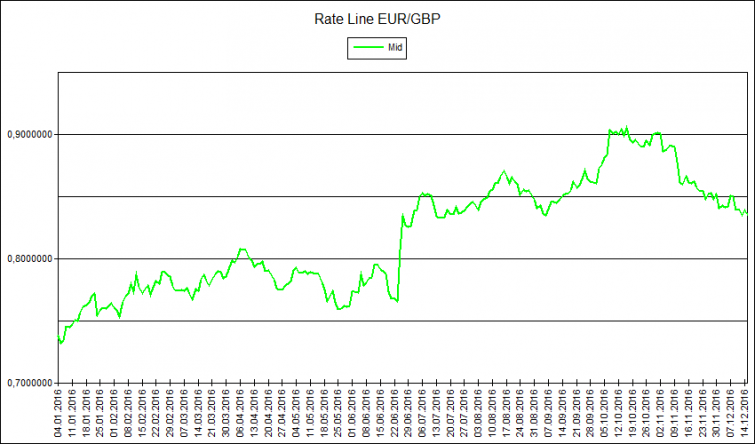The ABC of Risk Management: Understanding Financial Risk Modeling & Ratios

Efficient risk management is not rocket science. Anyone who knows the basics and understands the logic behind the different approaches can use them to bring real added value to their treasury. Part 1 of our risk management series covered Value at Risk, and this time we will be taking a look at hedging.
Many corporate treasury activities are fraught with risk, in particular, trade relationships involving foreign currency. Not only do companies want to make these risks more predictable, they also want to be able to hedge them. There are a number of reasons why deals are associated with a certain risk, including the following:
- Political reasons, for example, war or unrest in a country,
- Lack of convertibility of local currencies,
- Interest rate risk,
- FX risk,
- Transaction risk and fraud risk in connection with transactions,
- Banking risks, for example, the withdrawal of a loan,
- General business risk, e.g. falling sales figures or losing clients.
These factors can have an impact on deals, and sometimes the outcome will be worse than anticipated, sometimes better. This is what hedging is all about: companies protect themselves and hedge their exposure by investing in an offsetting FX position so that cash flows in foreign currency ideally cancel each other out. This allows companies to partially or fully compensate for the risk associated with one position by the opportunities presented by another.
Taking the example of an underlying transaction (giving rise to a receivable) in USD, there is a certain probability that changes to interest rates will change the amount of the incoming payment. It might be that the value has gone up, but you might also incur a loss, and while there are currency forecasts, there is no certainty when it comes to the development of rates. A look at current volatility charts shows that there can be significant fluctuations. Financial markets are often rather volatile.

In deals worth several million or more, such fluctuations can impact the result considerably.
By making a counter-transaction worth the same amount in addition to the USD-denominated payable, I eliminate the FX position and can calculate with and count on an incoming EUR payment that is guaranteed to be the agreed amount. However, this scenario neglects accounting effects that are of significance at the time of entering the receivable.
Hedging transactions and natural hedging
Hedging in a treasury context can involve “hedging transactions,” such as interest and FX deals, with specific reference to the position to be hedged. In the context of FX trade, for example, you can hedge a cash position with a forward transaction that is consistent both in terms of time and in terms of economic value.
It should be taken into consideration what type of transaction I can and want to use to hedge a certain risk. There are many different variations, the most common being the following:
- Spot contract: purchase or sale of a foreign currency for immediate delivery.
- Forward contract, FX forward: forward contracts can be outright or conditional. An outright forward transaction stipulates that both parties have an obligation to buy or sell an asset at a specified price on a future date. This comprises exchange-traded and over-the-counter (OTC) forward transactions. In a conditional forward transaction, the long side has the right to pull out. A typical example is options.
- NDF: Non-Deliverable Forwards (NDFs) are forward contracts mostly involving a non-convertible foreign currency and a freely convertible currency (mainly USD) and are always cash-settled at maturity. Unlike normal forward contracts, NDFs have both a settlement date and a fixing date when the spot market exchange rate is determined. When the prevailing spot market exchange rate has been determined, the difference to the agreed-upon exchange rate is calculated, determining the resulting settlement amount. The payment is made on the settlement date.
- Options: Currency options allow for the hedging of exchange rate volatilities. Buying a currency option grants the buyer the right – but not the obligation – to sell or buy a currency at a specified exchange rate. The buyer has to pay the seller a premium to obtain this right when concluding the contract.
Having to make extra hedging transactions involves a certain effort. Sometimes companies have the option of compensating by means of offsetting positions within their business. This is referred to as “natural hedging.” In principle, this is a simple and practical method and it doesn’t entail any external costs. It presupposed continuous cash flows as well as the ability to identify suitable deals and offsetting positions. If a cash flow fails to materialize – e.g. due to the counterparty defaulting – the internal hedging of the offsetting position is void.
The challenges: uncovering all risk positions group-wide
An important prerequisite of efficient hedging is an overview of all risk positions. However, in many businesses this is actually the main challenge: while most of them are on top off the group companies’ net risk positions that converge at headquarters, they often don’t have an overview of the individual risk positions at the group level. This makes it difficult to make decisions on which transactions and contrasting risk positions could potentially cancel each other out. Efficient and ideally internal hedging is only possible if you integrate the subsidiaries in your TMS in a way that ensures visibility of all trades and corresponding risks.
So neither hedging nor identifying suitable trades to protect myself from these risks is rocket science: provided I know my risk positions and have all transactions or external hedging transactions in one system, maybe even complemented by a direct integration to trading platforms such as 360T and FX-all.
Want to learn more about our powerful treasury solutions? Time to discover Coupa Treasury.